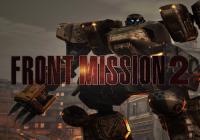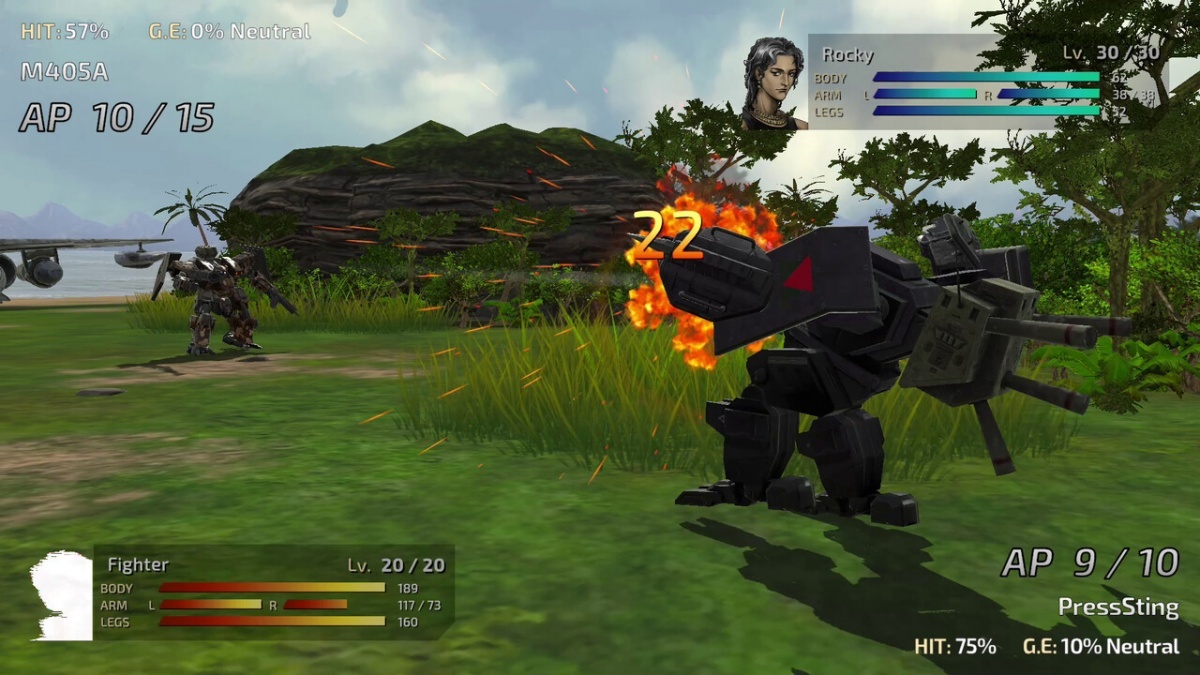Front Mission 2: Remake (Nintendo Switch) Review
By Coller Entragian  08.06.2024
08.06.2024

Front Mission 1st: Remake was a faithful remake that had a lot of technical issues at first but was gradually polished over time with patches. Issues with the translation and animation bugs were addressed and it even got ports to beefier consoles and PC to enhance its visuals. The remake of the first Front Mission was deliberately simplistic to honour the original gameplay. The sequel enhances the experience and strategic possibilities significantly, but can the remake maintain the momentum and also improve upon the 16-bit original?
Front Mission 1st: Remake was a raw-looking game that had seventh-gen aesthetics. The blurry muddy brownish colours tried their best to be a middle ground between grimdark realism and the pallet of the 16-bit Super Famicom pixel art. Staples like the PS360 style flat shiny grass, overly glossy metallic surfaces, and aggressive depth of field effects lent themselves to making the graphics look like miniature dioramas. Front Mission 2: Remake is set in a near-future world where large mobile armours called Wanzers are used in warfare. The scenario begins in the impoverished People's Republic of Alordesh, which has declared independence from the Oceania Cooperative Union (OCU).
The narrative unfolds with three protagonists; Ash Faruk, a young OCU corporal who is stationed in Alordesh at the time of the coup; Lisa Stanley, an OCU intelligence officer who is investigating a secret military operation; and the middle-aged Thomas Norland, an affable captain in the OCU army who is sent to Alordesh to quell the uprising. The three characters' stories intertwine as they uncover the truth behind the coup and the conspiracy that is driving it. Like in real life, the coup is being backed by a powerful globalist corporation called Huffman Industries, which is using Alordesh as a testing ground for new Wanzer technology.

Game progression leads to learning more about the complex political and social situation in Alordesh. The story explores themes of war, politics, and the dangers of unchecked corporatism. It doesn't shy away from the harsh realities of war and laments its devastating effects on both soldiers and civilians.
Front Mission 2: Remake handles these subjects very respectfully and shows how Huffman Industry bribes Alordesh government officials, allowing the company to freely operate within the country. The plot is surprisingly relevant and echoes the events of the Gulf Wars and how the rise of drone warfare is eerily similar to the application of experimental Wanzers.
Front Mission 1st has a very dry and serious story, and this is still the case with Front Mission 2: Remake. The translation is also very questionable. There have been a few ongoing updates during this review, but work still needs to be done. Some utterly confusing and nonsensical lines of text read like an A.I. translated them.
A lot of the appeal of the Front Mission games is how flexible the customisation options are in building mechs for the party. The Wanzers building is akin to the activity of kit-bashing; a pastime where model kits from different vehicles are combined to craft a unique craft or mech. This carries over to Front Mission 2: Remake's complex and challenging gameplay.

Players must carefully choose their positioning and attack strategy on the grid-based battlefield to defeat their enemies. Each Wanzer has unique stats and abilities, and can be customised with different weapons, armour, and other equipment for hours. The turn-based strategy gameplay slows the pace during explosive and emotional climactic battles, ensuring that every action matters. New factors to consider in the sequel are the terrain properties and the AP (Action Points) system, which emphasise the importance of battle positioning more than ever.
Each unit has a maximum amount of AP that gets restored at the end of each turn, and awareness of the AP cost of different actions is crucial. For example, moving a unit a long distance will cost more AP than moving it a short distance. The terrain becomes a crucial factor since it can affect Wanzer's movement; it's a welcomed addition that takes a lot of the randomisation out of the equation. One of the hurdles of Front Mission 1st was being at the mercy of RNG. Despite this, Front Mission 2: Remake still manages to be unrelentingly difficult.
Grinding is effectively required because the costs to upgrade will leave the party utterly broke. Compounded with the need to buff characters to learn skills for their job classes, Front Mission 2 can seem artificially padded with how much time will be spent in battles. It is already a lengthy and beefy game that breaches past the 50-hour range and easily goes into the 100s if gamers dare to achieve 100% completion.

One of the most distinctive features of the Front Mission 2 soundtrack is its use of electronic percussion. This gives the music a modern and futuristic feel, which is fitting for the game's setting. It was composed by Noriko Matsueda, who also composed the music for Front Mission 1st. The music is generally upbeat and action-packed, but it also has some slower and more atmospheric pieces for town menus or while in camp. The soundtrack features several jazz-inspired and orchestral pieces, adding sophisticated flair and elegance to the music. There is also an option to switch to the original sound font from the Super Famicom, which still holds up with the 16-bit chip-tune having a grungy warmth that lends itself well to the retro ambiance and war-time flavour.
The graphics in the Front Mission remakes are a mixed bag. In some angles they can look quite good, with detailed textures and models. However, in other angles they can look dated and haggard, with low-resolution textures and muddy visuals. The aggressive use of post-processing effects is also a bit of a double-edged sword. On the one hand, it helps mask some of the [i[Front Mission 2: Remake[/i]'s graphical shortcomings. On the other hand, it can also make the title look artificial and over-processed.
Portraits are redrawn in a more refined style and don't look like Yoshitaka Amano's art was passed through a filter. The animations of the robots also feel more weighty and explosions are punchier. Load times are much faster now, but they are still plentiful; expect to see the 'Building Wanzer', screen until it's burned into your retinas. The visuals still resemble what fans would expect a modern Front Mission to look like. It is too bad the developers didn't opt for an HD-2D hybrid where they could have leaned in on the strengths of 3D models and chunky pixel art to make cute mech models and cheeky diorama-like maps.

Cubed3 Rating
Good
A lot of Front Mission 2: Remake's shortcomings lie in a mixture of a sloppy transition to becoming a more modern game, including low budget and some of the old design choices from its source material. Many of the best aspects of the original still shine through and the remake's staff did make some legitimate improvements like the options to speed up gameplay aspects of the gamepla. With a bit more time, perhaps a better translation will get patched in and maybe a port for the more powerful consoles will iron out its technical shortcomings. Anyone who desires a demanding and complex strategy mecha game with political intrigue and a plot that predicts the dangers of globalism will get their money's worth with Front Mission 2: Remake.

![]() 6/10
6/10
![]() 0
(0 Votes)
0
(0 Votes)
 Out now
Out now  Out now
Out now  Out now
Out now  Out now
Out now Comments
Comments are currently disabled

 Sign In
Sign In Game Details
Game Details Subscribe to this topic
Subscribe to this topic Features
Features





 Top
Top

